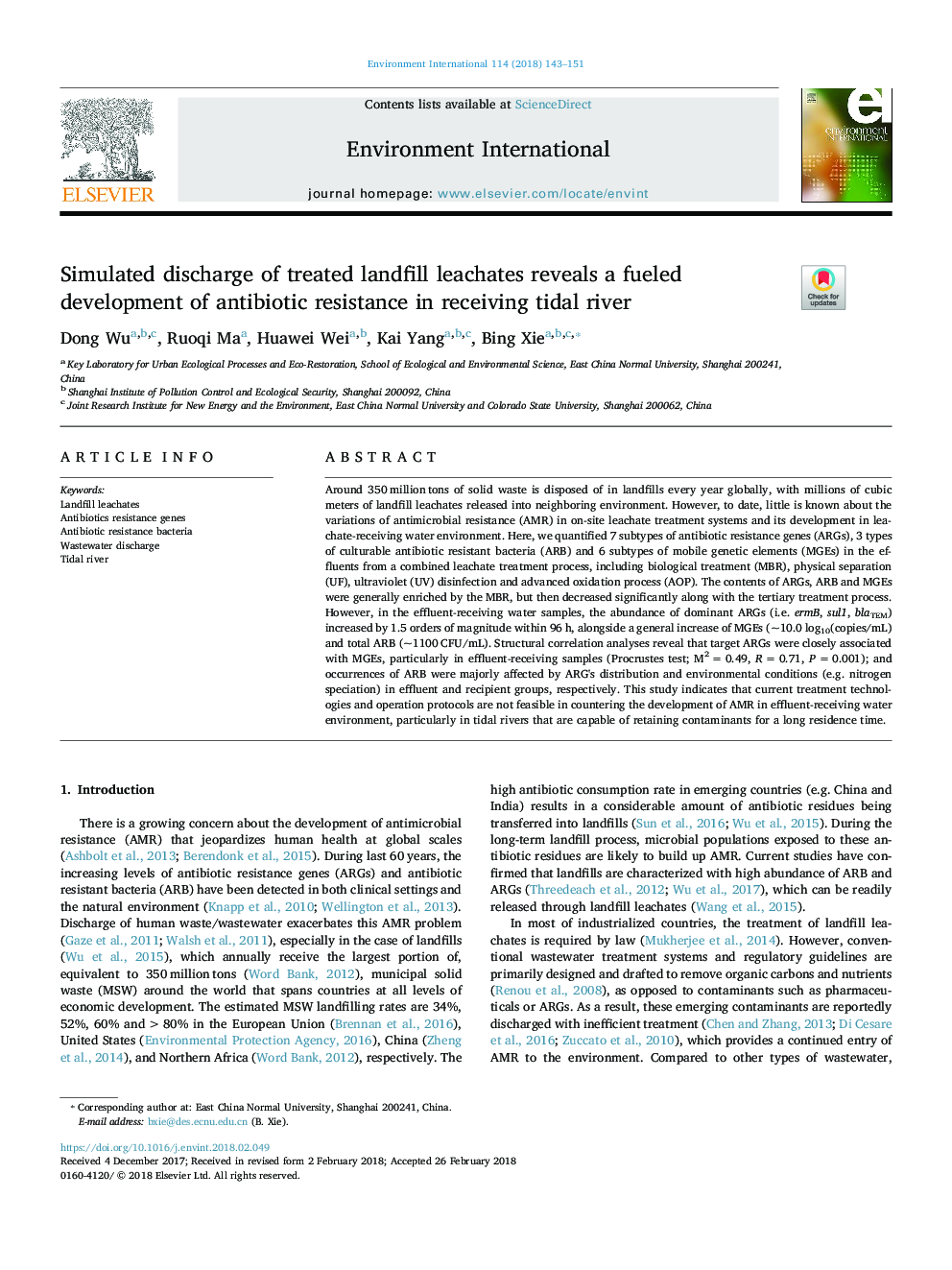| کد مقاله | کد نشریه | سال انتشار | مقاله انگلیسی | نسخه تمام متن |
|---|---|---|---|---|
| 8855360 | 1619016 | 2018 | 9 صفحه PDF | دانلود رایگان |
عنوان انگلیسی مقاله ISI
Simulated discharge of treated landfill leachates reveals a fueled development of antibiotic resistance in receiving tidal river
ترجمه فارسی عنوان
تخلیه شبیه سازی شده از محلول های زباله های تصفیه شده نشان می دهد که توسعه قابل توجهی از مقاومت آنتی بیوتیک در دریافت رودخانه جزر و مدی
دانلود مقاله + سفارش ترجمه
دانلود مقاله ISI انگلیسی
رایگان برای ایرانیان
کلمات کلیدی
فاضلاب زباله، ژنهای مقاوم در برابر آنتی بیوتیک، باکتری مقاوم به آنتی بادی، تخلیه فاضلاب، رودخانه جزر و مد،
موضوعات مرتبط
علوم زیستی و بیوفناوری
علوم محیط زیست
شیمی زیست محیطی
چکیده انگلیسی
Around 350â¯millionâ¯tons of solid waste is disposed of in landfills every year globally, with millions of cubic meters of landfill leachates released into neighboring environment. However, to date, little is known about the variations of antimicrobial resistance (AMR) in on-site leachate treatment systems and its development in leachate-receiving water environment. Here, we quantified 7 subtypes of antibiotic resistance genes (ARGs), 3 types of culturable antibiotic resistant bacteria (ARB) and 6 subtypes of mobile genetic elements (MGEs) in the effluents from a combined leachate treatment process, including biological treatment (MBR), physical separation (UF), ultraviolet (UV) disinfection and advanced oxidation process (AOP). The contents of ARGs, ARB and MGEs were generally enriched by the MBR, but then decreased significantly along with the tertiary treatment process. However, in the effluent-receiving water samples, the abundance of dominant ARGs (i.e. ermB, sul1, blaTEM) increased by 1.5 orders of magnitude within 96â¯h, alongside a general increase of MGEs (~10.0â¯log10(copies/mL) and total ARB (~1100â¯CFU/mL). Structural correlation analyses reveal that target ARGs were closely associated with MGEs, particularly in effluent-receiving samples (Procrustes test; M2â¯=â¯0.49, Râ¯=â¯0.71, Pâ¯=â¯0.001); and occurrences of ARB were majorly affected by ARG's distribution and environmental conditions (e.g. nitrogen speciation) in effluent and recipient groups, respectively. This study indicates that current treatment technologies and operation protocols are not feasible in countering the development of AMR in effluent-receiving water environment, particularly in tidal rivers that are capable of retaining contaminants for a long residence time.
ناشر
Database: Elsevier - ScienceDirect (ساینس دایرکت)
Journal: Environment International - Volume 114, May 2018, Pages 143-151
Journal: Environment International - Volume 114, May 2018, Pages 143-151
نویسندگان
Dong Wu, Ruoqi Ma, Huawei Wei, Kai Yang, Bing Xie,
